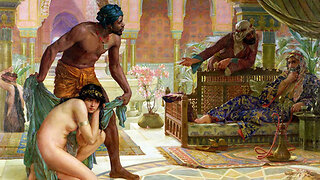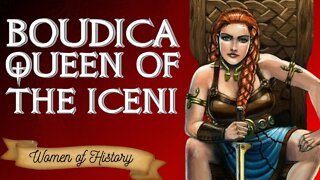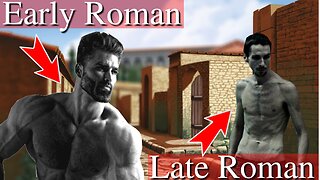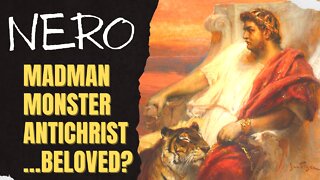Romans Hated Phoenicians for Being Black
In 247 B.C., the year Hannibal Barca was born, the Carthage empire was about 500 years old. Known as one of the greatest strategist in military history, the battles of Hannibal would strike a turning point in the history of the continent that would be called Africa.
Carthage had been settled by Phoenicians as a city-state in North Africa near the current Tunis. In his 1961 work, French Historian Gabriel Audisio comments that he considered "Hannibal to be neither a Phoenician, nor a Carthaginian, nor a Punic, but a North African... The majority of the Punic populace seems to have had African, indeed Negroid, ancestry."
Whether described as Carthaginians, Phoenicians, or Punics of North Africa, according to Audisio's research they were certainly a mix of aboriginal North Africans that included the native Berbers, Moors and other groups.
The Phoenicians were a Semitic language people. English writers and speakers can thank the Phoenicians for the current English phonic system. The English Alphabets were borrowed from the Phoenician script. Their cultural influence was wide throughout the Mediterranean Sea nations. They were known as skilled sea merchant traders. They ruled in pre-Roman and pre-historic Iberia (currently Spain and Portugal nations on the Iberian Peninsula), until losing against Rome in the Third Punic War. The city of Carthage was destroyed by the Romans in 146 BC.
There is no picture of Hannibal in existence today. The coin above is frequently presented by commentators as a representation of Hannibal and his legacy of tamed elephants. While this writer was not able to find an academic source for this coin to confirm its date -- which was more than 2,000 years ago. The existence of such coinage during some point during our common age is no surprise in light of Hannibal's historical legacy.
What we do have are descriptions of Hannibal by commentators of his time. According to the Roman historian Levy of the first century of our era, Hannibal was "fearless, utterly prudent in danger, indefatigable, able to endure heat and cold, controlled in eating habits, unpretentious in dress, willing to sleep wrapped in military cloak, a superb rider and horseman." He was the son of the Carthage general Hamilcar Barca. There is no knowledge of his mother in the history records, not even her name. He had two brothers: Hasdrubal resided in Spain and Maharbal was captain of Hannibal's calvary.
Carthage and Rome were at war during the First Punic War (264-241 B.C.). Both empires were seeking supremacy over the Mediterranean. Hannibal's father, Hamilcar Barca, general of the Carthaginian mercenaries, was infuriated about the western Mediterranean losses of Sicily and Sardinia. When Hannibal was 17 years old, however, his father was killed in an ambush in Spain, which was primarily under the rule of the North African empire. Hannibal would son step fully into his military career.
In October 218 B.C., during the Second Punic War, Hannibal had arrived at the Alps. His soldiers are said to have stretched for more than eight miles at the Alps, the foothills of the Roman Empire. Hannibal's army of 100,000 men would trek and fight 1,500 miles to arrive at the Alps from Spain. Hannibal armies included Numidians, North Africans from an area roughly where Algeria now draws its boundaries. The Numidians were known as master horsemen who could guide their horses with their knees, leaving their hands free to use swords and throw javelins.They had fought attacks from European tribes like the Gauls.
Hannibal is said to have given this speech to the army of men who had survived and crossed the swift-flowing Rhone river:
"Why are you afraid?... The greater part of our journey is accomplished. We have surmounted the Pyrenees; we have crossed the Rhone, that mighty river, in spite of the opposition of thousands of Gauls and the fury of the river itself. Now we have the Alps in sight. On the other side of those mountains lies Italy.... Does anyone imagine the Alps to be anything but what they are--lofty mountains. No part of the earth reaches the sky, or is insurmountable to mankind. The Alps produce and support living things. If they are passable by a few men, they are passable to armies."
Hannibal lost half of his army in the first two weeks into the Alps. Landslides were touched off by mountain tribes. Men died during hand battle with tribesmen. Starvation and disease were also companions of the embattled lot. Polybus, a Greek historian and contemporary to Hannibal, described Hannibal's arrival to the Po Valley with about 26,000 men. At the Po Valley, Hannibal is said to have made this speech:
"Soldiers! You have now surmounted not only the ramparts of Italy, but also Rome. You are entering friendly country inhabited by people who hate the Romans as much as we do. The rest of the journey will be smooth and downhill, and, after one, or at most a second battle, you will have the citadel and capital of Italy in your possession."
Commentators have speculated on why Hannibal spoke these words because the men were about to face the most difficult part of the journey. Friends did not await in the Po Valley. Here, the Roman army would meet the men in battle. In retrospect, considering how far the men had come, there really was no going back at this point. The Carthaginians believed that Rome was considering an invasion of Africa. Hannibal believed he had to act through an overland attack on Roman to save Carthage. He would spend 15 years in Italy, winning many battles -- such as the Battle of Cannae where he lost 6,000 troops to Rome's 70,000 troops.
We know Hannibal did not succeed, but are astonished by how close he came to success. The second of the Punic Wars was over. When Hannibal eventually retreated with his army to Carthage, his army was defeated by Scipio Africanus in the Battle of Zama. Always sought by the Romans, when Hannibal was about the age of 64 and to be taken prisoner, he took poison and is recorded to have stated:
"Let us now put an end to the great anxiety of the Romans who have thought it too lengthy and too heavy a task to wait for the death of a hated old man."
Many scholars have concluded that the founders of the first Mesopotamian civilization were Black Sumerians. Mesopotamia was the Biblical land of Shinar (Sumer), which sprung up around 3000 B.C.
After deciphering the cuneiform script and researching ancient Mesopotamia for many years Henry Rawlinson (1810-1895) discovered that the founders of the civilization were of Kushite (Cushite) origin. He made it clear that the Semitic speakers of Akkad and the non-Semitic speakers of Sumer were both Black people who called themselves sag-gig-ga or “Black Heads.”
John Baldwin wrote in his book “PreHistoric Nations” (1869): “The early colonists of Babylonia were of the same race as the inhabitants of the Upper Nile.”
This was corroborated by other scholars including, Chandra Chakaberty, who asserted in his book “A Study in Hindu Social Polity” that “based on the statuaries and steles of Babylonia, the Sumerians were “of dark complexion (chocolate colour), short stature, but of sturdy frame, oval face, stout nose, straight hair, full head; they typically resembled the Dravidians, not only in cranium, but almost in all the details.”
Shang Dynasty of Ancient China
In a genetic study published in the “Proceedings of the National Academy of Science Genetic,” researchers found evidence showing the first African arrived in China about 60,000 years ago. Researcher and population geneticist Li Jin states, “Our work shows that modern humans first came to southeast Asia and then moved later to northern China. This supports the idea that modern humans originated in Africa.”
A 2009 published essay from the “Light Words from the Dark Continent; A Collection of Essays,” by Nibs Ra and Manu Amun, offers insight to early Chinese civilizations. It states that the first documented governance in China was headed by the Shang or Chiang dynasty in 1500-1000 B.C. King T’ang or Ta, founder of the Shang dynasty, was of African descent. The Shang were also called Nakhi, which literally means “Black” (Na) and “Man” (khi). King T’ang and the Shang dynasty were responsible for unifying China to form their first civilization.
Ancient Mexico
The Olmecs were an ancient civilization in the Americas. Researchers such as Rashidi, Ivan Van Sertima and Alexander Von Wuthenau have discovered and shared evidence showing that the original inhabitants of Mexico were of African descent. The Olmecs were no different from people found in the Mende regions of West Africa.
Best known for carving the colossal stone heads that date back to 1100 B.C., more evidence of their existence before European explorers has been found. The Olmecs built pyramid-like structures made of mud in Mexico. They were also very artistic and created terracotta art that displayed common activities like pottery-making and wrestling. To add to their achievements, the Olmec people developed a calendar system around 3100 B.C.
The Minoans Ancient Greece
Archaeologist Manfred Bietak conducted extensive research on ancient Greek civilizations and their connections to ancient Egypt. Bietak unearthed evidence from artwork as early as 7000 B.C. that depicts the early people inhabiting Greece were of African descent.
The Minoan culture of Ancient Greece reached its peak at about 1600 B.C. They were known for their vibrant cities, opulent palaces and established trade connections. Minoan artwork is recognized as a major era of visual achievement in art history. Pottery, sculptures and frescoes from the Minoan Bronze age grace museum displays all over the world. Palace ruins indicate remnants of paved roads and piped water systems.
Indus Kush Civilization
On March 3, 2000, historian Runoko Rashidi gave a lecture in Honolulu, Hawaii, about the presence of Black people in ancient and modern India. He stated that the face of India changed around 2000 B.C. when nomadic people Indo-Europeans or Aryans traveled to the Innis Valley and other fertile locations in southern India.
Prior to the invasion, Blacks in India built rich and advanced civilizations. Author Wayne Chandler recanted his amazing discoveries about Blacks in ancient India in his book “African Presence in Early Asia.” The remarkable cities of Harrappa and Mohenjo-daro are only two of the many cities built by Black people. These cities cover large regions of northern India and modern-day Pakistan.
-
 5:00
5:00
BrookeCerda
11 months agoHannibal Barca of Carthage, The Bastardization of North Afrika
425 -
 22:16
22:16
Maiorianus
1 year agoThe Roman Empire would not have fallen if these decisions were made differently.
5261 -
 28:31
28:31
MAGA Lion HAT
11 months agoThe Muslim Barbary Pirates & Their Captured White Slaves! 👨👩⛓️👳🏿☪️🕌
1.48K2 -
 0:57
0:57
Maiorianus
1 year agoWere the Barbarian invaders of Rome actually friendly?
52 -
 10:17
10:17
Parry This
1 year agoQueen Boudica of the Iceni - Warrior Hero Who Defeated the Romans
1215 -
 14:53
14:53
Maiorianus
11 months agoWhy did the martial vigor of the Romans decline in the late Roman Empire?
112 -
 1:53:59
1:53:59
#TAZADOCTRINE
1 year agoBlack Romans & Greeks Race in Antiquity in Eurasia HIDDEN BLACKS IMAGES EURASIA
14 -
 14:22
14:22
Maiorianus
11 months agoMeet one of the most overrated Roman emperors: Theodosius, the Intolerant.
571 -
 22:59
22:59
Iceberg TheoryX
1 year agoThe Truth About Nero and Why Romans Loved Him
92 -
 17:44
17:44
Maiorianus
11 months agoThe late Roman Navy: A shadow of its former self. Or was it?
88